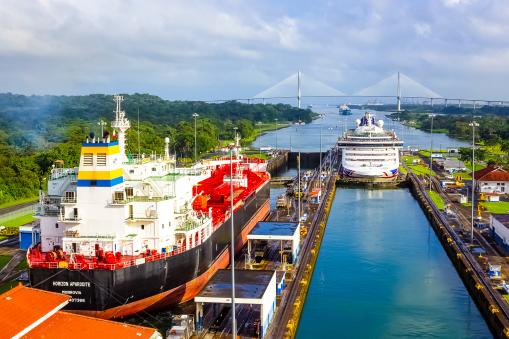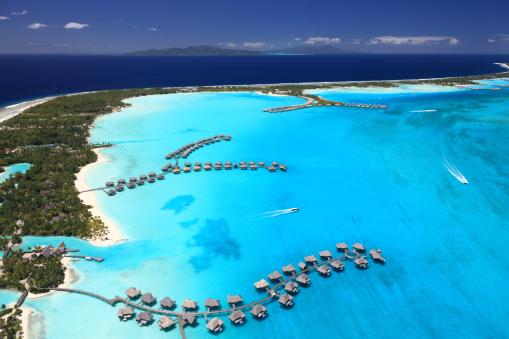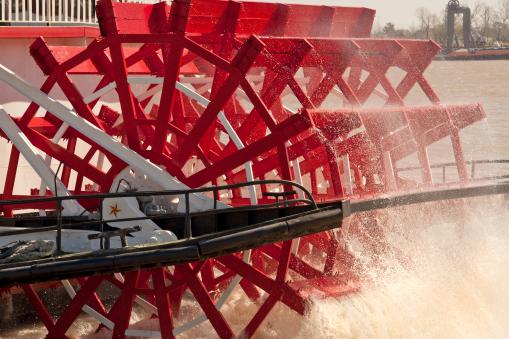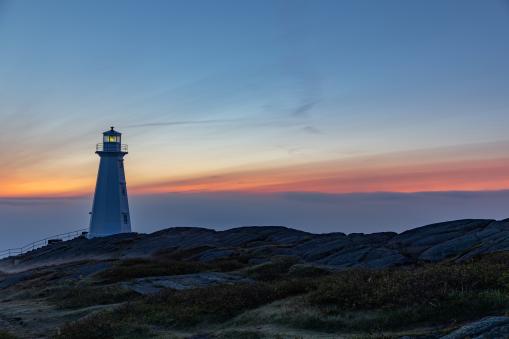Become a part of your journey
You are here
Further Afield's Journal
The Travel Nook
THE DOURO RIVER
The Douro River rises in the Sierra da Urbion in northern Spain. It flows west through Spain then meanders south creating the border between Spain and Portugal before flowing west again and entering the Atlantic Ocean at Porto, the second largest city in Portugal. The Douro translate as the 'river of gold'. When cruising on the river in the twilight of the evening, the sun's reflection on the water explains why this is so called.
The Douro River valley is the birthplace of Port Wine, that’s now internationally recognized. The Rabelo boats that can be seen on the river are a flat bottom boat that were historically used to ferry barrels of Port Wine to the city of Porto.
Portugal has a microclimate with hot summers and cold winters, the slate rich soil creates an ideal agricultural environment for the cultivation of grapes. The geographical contours of the country is a kaleidoscope of colour, mountains ranging in scale from 2,350 to 900 meters gives this shadow of protection to the region. Springtime has the vineyards coming to life then the grapes are appearing green and dark, as they ripen. Watch the protection nets hanging from the rows of vines. Decks of vineyards on the slopes give that tiered effect to help drainage and prevent landslides. For a country its size, Portuguese wine is very popular in the world ranking of wines.
The Douro river has undergone extensive development and changes throughout the 20th century. With the steep gradients and rocky terrain, dams and locks have governed the flow of water. Hydroelectric power stations have been built, you experience the thrill of going through the deepest Lock in Europe. Built in the 1960s it was the first dam on the Douro; the rise of the water is 35 metres, the dam is 85 meters long and 12 metres wide. A number of power stations have been built, while reducing the need for fossil fuels somewhat, these dams have a restriction on the flooding that the valley’s were prone too this in turn has given farmers a steadier income.
Travelling on the cruise ships that traverse the Douro, we get to see Portugal from that beautiful perspective of the water. No seasickness, (for anyone prone to it), docked beside the towns and cities that we visit. Meeting the local people, tasting their produce, packing and unpacking once. The safety and knowledge of being only a phone call away should one need medical attention.
Written By Joe Fahy
The Panama Canal
The Panama Canal is the artificial body of water that links the Atlantic and the Pacific Oceans. This canal was opened for trade in 1914 after being in a construction phase for over 30 years. The notion of opening a canal across the Isthmus of Panama goes as far back as 1534.
The Spanish Fleet of ships that ploughed through the Atlantic Ocean in the 1600’s were the quintessential template of their naval might. They carried cargo or troops they were built for both with a capacity for as many as 60 cannons. Spanish explorers had conquered a considerable amount of the western areas of North and South America. The idea of an easier passage from Spain to Peru was of vital importance. Yes, ships going around Cape Horn, at the very tip of South America had been achieved but sailing ships were having huge losses in such hazardous conditions. The loss of lives, ships, merchandise and finances were big issues.
Overland crossing proved futile, mountainous terrain and rivers of fierce velocity were a major problem. Geopolitical tensions in these areas were frightening, Indigenous communities and their way of life could not be tampered with.
In 1668 an English philosopher Sir Thomas Brown speculated that an opening at both sides should be started, then leave the rest to nature, a channel would eventually form. No one was interested in that hare brained idea.
The Darien scheme was launched in 1698. Darien had this idea of establishing a new colony in the gulf of Darien, it was going to be named New Caledonian. Finance was going to be raised from English, Dutch and Scottish investors. With this colony it was believed that a land mass could be the connection between the Atlantic and Pacific oceans. £500,000 was raised from regular people who had £5.00 to invest, but there were others that invested more with the intention of creating some plantations, this was about half the wealth of Scotland’s treasury. The English and Dutch parliaments were forced to withdraw from pressure by the East India Company leaving the Scots as the sole investors. Thousands volunteered to travel on board the ships that were leaving for New Caledonia. 16 ships in total left Scotland over a period of three months, with over 3,000 people on board. Disaster struck almost immediately, on the voyages many fell ill and died, arriving on the mosquito-infested scrap of land their first task was to bury their dead. Yellow fever and other diseases were to claim the lives of more than 2,000 of those who’d landed. The scheme was abandoned. It is believed that this scheme was the main precursor for the Act of Union being passed between Scotland and England forming Great Britain in 1707. The Darien National Park in Colombia which extends to 575,000 hectares occupies this region today.
France started to build the Panama Canal in 1881 after many negotiations between Panama and Colombia. Eight years later the company was in financial difficulties. The death rate was enormous because of the dense forests. Venomous snakes, spiders and other insects, yellow fever and malaria killed thousands. The climate had disastrous consequences, with walls of rocks, trees and soil being washed down on the excavated channels. The French government and companies that had contracts with them had spent $290 million and the estimated deaths were 22,000 men. The government decided to stop the operation.
The American government supported a number of companies to take over the project and finally in 1914 the Panama Canal was completed and opened for business. It’s a lock canal system with two high level artificial lakes to lift ships up and over the Continental Divide. There are 8 sets of locks. The length of the Canal is 80 kilometres or 50 miles. All vehicles, containers and cruise ships pay tolls of various prices depending on size or cargo. The number of ships allowed at a time is 32.
Crossing through the Panama Canal on a cruise vessel is an adventure in itself. The Captain relinquishes his duties to the pilot from Panama who takes the vessel through the canal. Prior to the ship’s arrival the authorities carry out several documentation control checks. Watching the ships and boats that come into the port while others wait to enter, it’s an awakening to mankind’s achievements.
The Panama Canal is classed as one of the modern day ‘Seven Wonders of the World’.
Unveil the Magic
The Polynesian Islands are situated in the South Pacific Ocean. Evidence of habitation dates back about 2,000 years. The first settlers have their DNA traced to Asia. The beliefs, myths, cultures and religion of these people are still evident on the islands to this present day.
European explorers discovered the islands in the 16th century. In 1842 the island of Tahiti became a French protectorate and a colony in 1880. The other islands such as Bora Bora, Moorea, Raiatea, Taha and many others are included in the French Polynesian or Society Islands. The reason France wanted dominance in this region was mainly because of economics, the trade routes had opened to Asia, South America and the Pacific islands.
Cruising and vacationing in the region is an awakening experience to another world. Being sometimes described as the poet John Milton’s ‘Paradise Lost’.
Bora Bora island is regarded as one of the most beautiful islands in the world for snorkelling or scuba diving. Photograph the turquoise colours of the ocean, that’s home to plants, sea animals, fish, pearls and coral reefs. The overwater bungalows. Mount Otemanu, the highest point on the island, is at just over 700 meters and is of volcanic origin.
Tahiti, the largest of the islands, is renowned for its stunning beauty, its cultural heritage, music and dance. The festivals that showcase traditional rhythms, melodies and movements that have survived through generations. Colours and patterns of Tahitian costumes are an essential part of the visual spectacle of these festivals. The black pearls that are cultivated in Tahiti are a significant part of their economy.
Gastronomy, one of the major differences between culinary and gastronomy is the emphasis not just on food preparation but also on the ingredients, how they are grown and the social significance they have to a region they originated from. Join in one of the delightful celebrations of not just a meal but also on the introduction to what you are eating and drinking. Choices of foods and desserts. 1. Poisson Cru: A quintessential Tahitian dish of raw fish marinated in lime juice and coconut milk. 2. Vanilla-infused Cuisine: Famous for its vanilla dishes used for main courses or desserts. 3. Tamara’a Ma’a Tahiti: This is a communal fest where the cooking involves the tradition of using an underground oven. You can have a variety of dishes from roasted pork, fish, breadfruit, and sweet potatoes. 4. Roulettes: The ultimate dining experience, this mobile food truck offers a variety of local and international cuisines.
Adventure activities to explore on the islands. Cycling, hiking, swimming, scuba diving with the marine wildlife, cruising through the islands, shows and musicals, fishing, or whale and dolphin watching. Volleyball games being played on beaches of pearl white sand. Walking through the lush rainforests.
Stories from yesteryear that we thought Hollywood had made up.
On Tahiti Island hear of the exploits of Fletcher Christian. In 1787 the HMS Bounty set sail from England for the Polynesian island of Tahiti. Captain William Bleigh was in charge of the 45 man crew, their expedition was to take a cargo of breadfruit plants from Tahiti to the West Indies for agricultural growth. Captain Bleigh was a strict disciplinarian, a tough taskmaster, with no sympathy for a slackening crewman.
The ship dropped anchor in Tahiti in October 1787. The crew were in awe of the island’s beauty, its people and especially the women folk. After spending almost six months collecting the breadfruit plants it was time to leave. Some of the crew and the women on the island were heartbroken. Only three weeks after leaving the island, the first Mate, Fletcher Christian seized control of the ship with the help of the majority of the crew. William Bleigh and 18 other sailors were set adrift, not everyone was happy with this mutiny but there was no more room on the small boat so they had to remain on board the Bounty. Captain Bleigh and his crew made it back to England in 1790.
The Bounty returned to Tahiti where they picked up 18 people, 6 local men and 12 women. Some of the original crew remained on Tahiti. The HMS Pandora went in search of the mutineers after news of their mutiny reached England. The sailors on Tahiti were arrested and taken back to England. Christian and the others travelled on until they arrived at the uninhabited island of Pitcairn, 1,300 miles from Tahiti. They burned the ship to avoid detection and built huts to survive. They lived undiscovered until 1808. Of the 26 sailors who parted company with Captain Bleigh and the others, only John Adams was still living. It’s recorded that there were various disputes, illness and jealousy between the sailors and natives leading to the loss of lives.
Descendants of the Christian and the other sailors still live on the islands, as well as in New Zealand, Australia and in the USA.
In recent decades exploration of the waters around Pitcairn island have recovered some artifacts from where the Bounty sank as the fire ripped through it.
Films, books and songs have been written about ‘Mutiny on the Bounty’.
Big Wheels Keep on Turning
The Mississippi River has its source on the Canadian border and flowing south to the Gulf of Mexico, between the Rocky and Appalachian Mountains, through 10 states of the US, with its tributaries draining 20 others and 1,500,000 square miles of land mass, this river has a significant impression on the country. It’s 2,340 miles or 3,760 kilometres long.
There are over 30 locks and dams, regulating the flow of water and producing electricity at various locations. 175 million tons of freight are estimated to be transported each year. For farming, it’s one of the most fertile farming lands in the USA. In the 19th and early 20th centuries huge amounts of agricultural and industrial products were carried on. Cities and towns developed on the river.
The Native American people have lived along the river for thousands of years mainly surviving on hunting and fishing but many have had a profound impact with agriculture and urban civilization. With the arrival of Europeans from the 16th and 17th centuries onwards the river and its tributaries served as major transportation arteries for adventurers, farmers, prospectors and spectaculars. The river has been a border or dividing line through the country. It has developed into a major influence on its path.
During the American Civil War in the 1860s the Mississippi was vital for the transportation of troops, equipment, provisions, horses, tanks, livestock for troops rations, hospitals, tents, medical supplies, staff, mail and whatever else was needed.
Lumber yards and moving logs.
Rivers have been used for moving timber whenever possible. The heyday of the lumber operations was from about 1860 until the early 1900s. Logs were strapped together and floated down stream like giant rafts. Hundreds of timber companies had set up businesses along the river banks. The lumber was mainly from Pine forests in the northern states, with both Pines and Hardwoods further south.
For the development of the tourism industry, hundreds of kilometres of trails have been laid out for hiking, biking and walking. Horse tracking, fishing and canoeing are also available. Cruising is a major attraction, where you can travel from 7 to 10 or more days. Along these routes there are Hotels, Lodges or Camping grounds. The trails vary from 2 to 42 kilometres.
Visitor centres include, Native American villages, Civil War Sights and Museums, Wine Tours and Tasting, Period Houses from the 18th and 19th centuries, Churches, Memphis, St. Louis, Tennessee, St. Anthony’s Falls or New Orleans.
Today’s tourism business on the Mississippi River sees millions of people visit the area every year, spending $20 billion and supporting more than 300,000 jobs. Many visitors have different reasons for been there. Family connections down through the years. Walking in the footsteps of statesmen and women. Retirees tracing their journey of life. The twin cities of Minneapolis and St. Paul in Minnesota have a multiplicity of attractions to offer.
Moving down the river to the City of St. Louis where the Missouri River joins the Mississippi we think of the characters in Mark Twain’s novels, Tom Sawyer and Huckleberry Finn who lived in Hannibal, on the banks of the river. Baton Rouge, capital city of Louisiana, a major port on the Mississippi.
From trade and commerce to farmers that tilled the soil, planted the seeds and harvested their rewards of cereals, root crops, corn, soybeans, fruits from these fertile fields along the river bed. The fisheries, and bird sanctuaries that have grown, developed and populated in the floodplains of this area.
Theatres have thrived from stories of the river, these stories that have been adapted for Films, Plays, Song and Dance. The tourism board estimates that the coming years are expecting to see an expansion in the river cruise business.
The home of Blues, Jazz and Rock and Roll.
“Left a good job in the city,
Working for the man every night and day
And I never lost one minute of sleep
Worrying about the way things might have been”.
“Big wheel keeps on turning
Proud Mary keeps on burning
And we’re rolling
Rolling, rolling on the river.”
Here’s a song written by John Fogerty of Creedence Clearwater Revival, released in 1969 about the riverboat Proud Mary, that sailed the Mississippi for 50 years. The name was changed to Mary Elizabeth after a change of ownership. It was built in 1905 and was used for many different projects. On the Hudson River in New York, it ferried convicted criminals to Sing-Sing State Prison.
On Lake Pontchartrain it was a ferry boat. Later a mail boat. Then in 1928 it was refitted as a Tug Boat on the Mississippi until it was retired for scrap in 1978. Now her legacy lives on as Proud Mary. Recorded by various artists including Ike and Tina Turner, and Solomon Burke.
The Jazz festival in New Orleans invites you to join in the fun. The Country and Western Music Hall of Fame, and the Grand Ole Opry, in Nashville or head for Memphis, Tennessee to the heart of soul music.
The intimacy of the river boats are the outstanding features, a group of about 400 people plus the crew is a comfortable number. The shore excursions are convenient to the towns and cities. Evening entertainment on most cruises.
NEWFOUNDLAND - THE STEPPING POINT FOR DEPARTING AND ARRIVING EUROPE AND CANADA
The region of Newfoundland and Labrador was founded by John Cabot, a seafaring adventurer in 1497. He claimed the island for the monarchy of England and house of Tutors, i.e Henry VII father of the famous Henry VIII St. John’s might have been named after John Cabot but some believe it also might be called after St. John the Baptist, whose feast day is 24th June.
This was not the first explorer to have been here. The Vikings began their explorations in the 700s and after being to Scotland, Ireland, France and Greenland over the centuries they moved further west. Evidence of Norwegian influence has been carbon dated back to 1,000 AD.
During the 17th century, we know that Newfoundland was populated, if only sparsely, by English, French and Portuguese settlers. Fishermen had found the sheltered harbours and beaches here to be almost free of freezing waters and so developed settlements for themselves and their families. Later formal institutions of church and state were established.
The civil war in England in the mid 1600s saw a significant migration to North America and Newfoundland. The same applies to the French during the 1789 Revolution and the overthrow of the monarchy and the Napoleonic wars that followed. Emigrants from the English Midlands and Southeast of Ireland moved here at that time creating a basis of the population that exists to this present day.
The world of commutations has an historical link with Newfoundland. Captain Robert Halpin, an English naval officer, was in charge of the Great Eastern Steamship that laid the first successful telecommunications cable across the Atlantic from Valentia island, Co. Kerry. Ireland to Trinity Bay, Newfoundland in 1866. It is recorded that he was to supervise a further 26,000 miles of cable worldwide before Robert retired. He married a woman who he had met in Newfoundland.
Marconi was responsible for opening the wireless communication station in Grace Bay, Cape Breton, and played a huge part in developing wireless technology. On the 15th April 1912 the RMS Titanic, owned by the White Star Line which was four days into a six day voyage from Southampton to New York, struck an Iceberg off the coast of Newfoundland. The ships radio operator received the distress signals that were being sent out on both the older SOS and modern CQD systems. The operator sent out signals on the Marconi communications system, based at Cape Race, in Newfoundland and Labrador. The signals were picked up by the Carpathian ship that made haste towards the Titanic. On arrival there three and a half hours later over 1,500 souls had been lost in the two hours forty minutes that it took for the ship to sink.
Newfoundland has had a remarkable relationship with the world of Air Navigation. The present day airport is in St. John’s but back in 1919 a suitable field had to be identified and levelled out to be suitable for a plane to take off that was taking part in a challenge being sponsored by the London Daily Mail newspaper with prize money of £10,000 for the first non-stop flight across the Atlantic. A number of aviators signed up for the event. The prevailing winds favoured a west-to-east voyage. We all witness this today as we fly, the journey from London, UK to Toronto will be approximately an hour longer than from Toronto to London.
Of the participants that were taking part John Alcock and Arthur Brown, both British aviators, achieved the accolade of becoming the first to fly nonstop across the Atlantic from St. John’s, Newfoundland to Clifden, Co. Galway. Ireland. The time was just under sixteen hours.
Amelia Earhart made two record-setting flights from here, in 1928 she became the first woman to cross the Atlantic while been a passenger and in 1932 she flew solo from St. John’s to the city of Derry in Ireland. Gander international airport was once an important refuelling stop for transatlantic aircraft. It’s still in use today and many aircraft facing medical emergencies or security issues use it as a landing point.
Most of the streets in Gander are named after famous aviators, including Alcock and Brown, Amelia Earhart, Charles Lindbergh and Chuck Yeager. Remembering the attacks of September 11th and US airspace was closed down, Gander took in 38 commercial aircraftand 4 military aircraft. Almost 7,000 people arrived at Gander, staying for almost one week.
The musical “Come from away” is based on this real life experience. It has travelled the world and is still going on.
When taking a trip to Newfoundland and Labrador, the opportunity to go hiking is overwhelming, with innumerable trails, be they difficult or a stroll, the choice is yours. Do the five kilometre hike to Signal Hill to Cabot Tower erected in 1989 to commemorate the 400 year old landing anniversary of John Cabot.
Relaxing on this magnificent viewing point overlooking the vast expanse of landscape, close your eyes, imagine ships on the horizon, a signal man with a selection of flags standing there to guide the lookout sailor in the crow’s nest on the main mast their safe way to shore.
Or gazing down on the beaches, let your mind wander, picture the soldiers of the Royal Armies of France or England as they battle to advance towards land.
These hikes offer any amount of choices, a fishing village that transports you back a century, food and culture. The Avalon Peninsula as it’s called will embrace you with an evening in a pub or restaurant. Watch the puffins, whales and seals that call this place home.
Small Icebergs drifting by, a look of contempt as if to say ‘I may get bigger’.
People of Newfoundland and Labrador are reputed to be friendly and welcoming, their creative language and knack for storytelling sets them apart. The characters you meet will tell you they took their heritage from the English, Irish, French and their Indigenous ancestors that created a culture that’s one of a kind.
Visit the Avalon Peninsula, a popular tourist destination, a people who believe that “if you’re not living on the edge you’re taking up too much space”.




